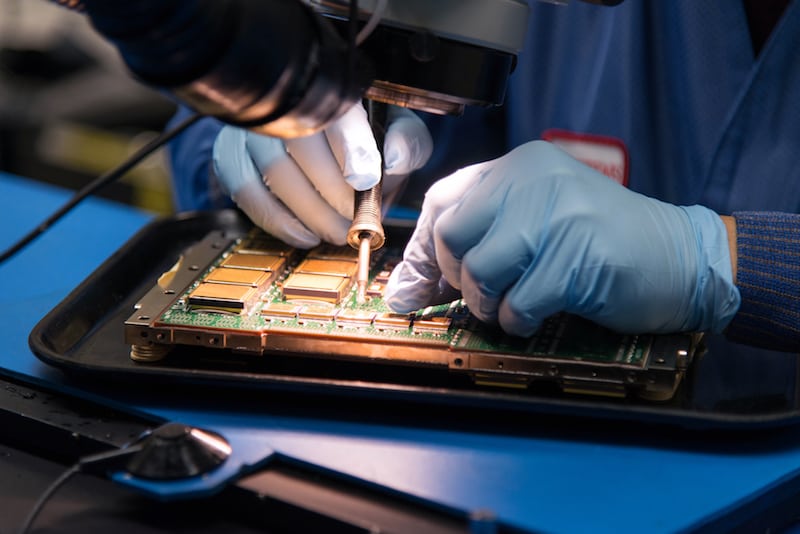
BAE Systems’ RAD5545 single-board computer provides next-generation spacecraft with the high-performance onboard processing capacity needed to support future space missions. Photo courtesy of BAE Systems
BAE Systems has a new generation of its space computer, the company said. It combines fast performance and extreme resiliency, enabling “previously impossible missions” in space, according to its manufacturer.
“We’ve been delivering radiation-hardened components for almost three decades, and our customers have come to trust the performance, reliability and longevity of our technology,” said Dave Rea, director of on-board processing and advanced technology at BAE Systems. “The RAD5545 SBC is the next step in the evolution of space computers. It’s the most technologically advanced radiation-hardened, general-purpose processor for space applications.”
The RAD5545TM is a single-board computer (SBC), which provides high-performance onboard processing capacity, BAE Systems said. It can support missions like weather and planetary exploration, communications, surveillance, tracking and national security. The company said the new computer features improvements over its predecessor, the RAD750 SBC, including size, speed and power efficiency.
Produced at BAE Systems’ facility in Manassas, Virginia, the RAD5545 SBC replaces multiple cards on previous generations of spacecraft. It has improved computational throughput, storage and bandwidth, and can support missions that single-board computers could not. This includes missions that require encryption processing, multiple operating systems, ultra high-resolution image processing, autonomous operation and simultaneous support for multiple payloads.